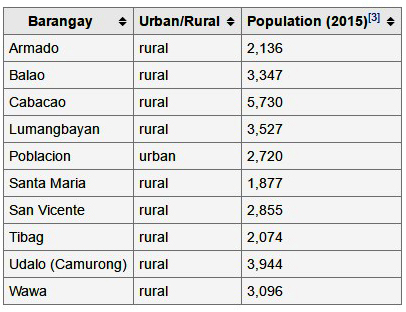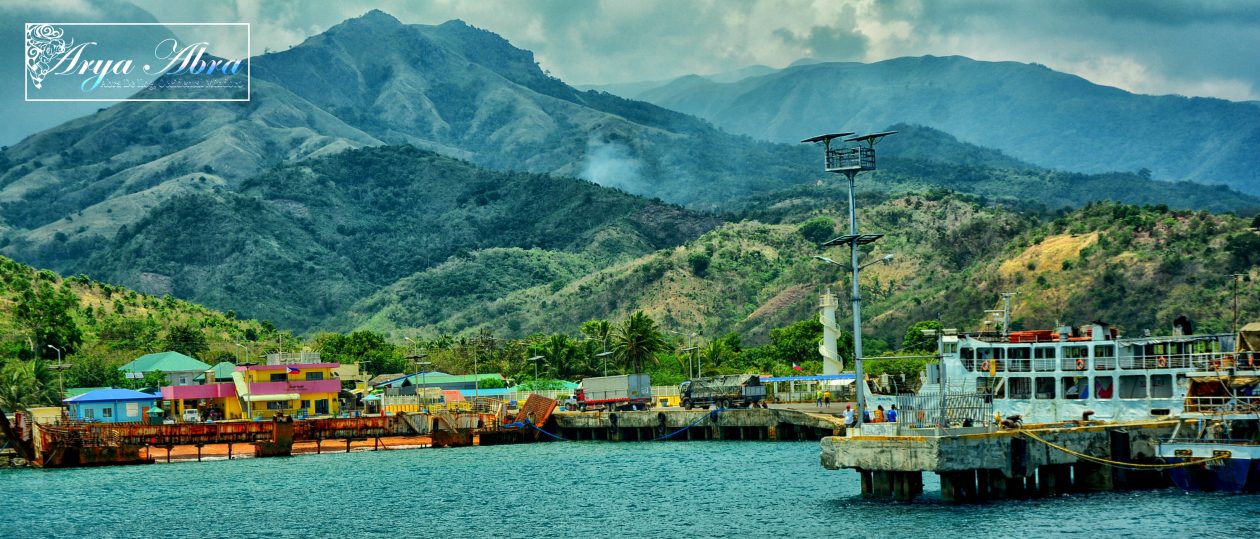Just like any other municipalities, tricycle is one of the major mode of transportation. They are primarily used by passengers traveling from one destination to another around Poblacion.
Monthly Archives: June 2016
Abra De Ilog Plaza
Abra De Ilog’s plaza sits along the main road going to port. It’s adjacent to San Rafael Parish Church.

Wind Energy Project In Abra De Ilog Put Into Hold

On October 23, 2009, Alternergy Partners Corporation has been awarded with six exclusive Wind Energy Service Contracts by the Department of Energy based on its financial and technical capabilities.
One of which is the “Abra de Ilog, Mindoro” Wind Energy Service Contract which covers an area of 18,711 hectares. The Project is estimated to generate approximately 40 MW capacity (source: alternergy.com).
However, in June 2015, it was put into hold due to excess in supply.
Energy director Mario Marasigan confirmed that some projects, including the Abra de Ilog wind project led by former energy secretary Vince Perez, were covered by a moratorium.
“The lifting of the moratorium will be based not only on the availability of the electricity market in Mindoro but also on the economics of the project… By the time there is electricity market, what will be the economics of the project?” Marasigan asked.
Marasigan said a feed-in tariff rate would not be viable in Mindoro.
He said the electric cooperatives of Mindoro were in a better position to determine the availability of the electricity market in Mindoro that would make projects more viable (source: thestandard.com).
Background
Description
The government approved the Renewable Energy Act in 2008 (RE Act 2008), which aimed to accelerate the development of renewable energy (RE) resources in the country by increasing RE-based installed capacity from the 2010 level of 5,438 MW to about 15,304 MW by 2030. Of this target capacity addition, 2,345 MW was allocated to wind technology.
A wind mapping study conducted by the US National Renewable Energy Laboratory in 1999 shows over 10,000 square kms. of windy land area exist with a combined capacity of about 70,000 MW. However, RE development, such as wind, has been relatively slow because of the high cost of feasibility assessments and of developing and constructing plants. As of 2010, the Philippines only had one wind power plant, the Northwind Bangui Bay Power Plant, in the northern part of the country with a capacity of 33 MW.
In December 2008, Alternergy Philippine Holdings Corporation (APHC) was awarded by the Department of Energy (DOE) the exclusive right to develop wind power projects in 3 locations: Pililla in Rizal, Abra de Ilog in Occidental Mindoro, and Kalayaan in Laguna. These locations were among those identified under the Philippine Wind Atlas as potential sites for wind farms due to good to excellent wind resources. APHC was subsequently awarded additional wind energy service contracts in 3 other locations in 2009. APHC is committed to implement the wind projects if the wind measurements and site specific studies demonstrate that the power plants are commercially viable.
APHC, a renewable power company which develops wind power projects, is headed by former Energy Secretary Vincent Perez. In September 2009, APHC entered into a joint venture with Eurus Energy Japan Corp. and Korea East West Power Co. (EWP). Eurus Energy is a subsidiary of Eurus Energy Holdings Corp. of Japan which is in turn owned by Tokyo Electric Power Co., Inc. (TEPCO) and Toyota Tsusho Corp, while EWP is a subsidiary of Korea Electric Power Corp. (Kepco). It should be noted though that Eurus Energy has since withdrawn from the project because of TEPCO’s problems in Japan as a result of the tsunami in 2011. A private equity fund specializing in renewable energy has stepped in.
The TA was provided to APHC, the Executing Agency (EA), to finance the first phase of the preparatory work for the construction of the 3 potential wind farm projects in Luzon. The TA would produce site-specific feasibility studies for each of the proposed locations to determine the viability for commercial operations of a wind power project (source: adb.org).
Read more of the description here.
Related articles:
- Alterenergy sets aside $380 million for two Rizal wind projects
- Alterenergy seeks more wind sites
- Perez-led Alterenergy bags 6 wind power projects
Abra De Ilog Main Street
Abra De Ilog Students After School
Team Meg Constantino (LP) Sweeps Abra De Ilog Local Election 2016
June 4, 2016
Official candidates of Liberal Party (LP) at Abra De Ilog, Occidental Mindoro, led by Mayor Meg Constantino, easily swept and won all positions in the recently concluded May 9, 2016 local election.
Meg Constantino, wife of out-going Mayor Eric Constantino who has completed his three-terms and set to step down on June 30, took a commanding and a totally convincing victory against her rival.
Garnering 8,889 votes, the Liberal Party official candidate easily captured the mayoralty position. She’s able to get the majority approval of the people with almost 70% of the total 12,788 votes cast.
Her opponent, Floro Castillo(UNA), only managed to get 3,127 votes.
For Vice Mayor contest, Meg Constantino’s running mate Boyet Quito (LP) also won against two other candidates.
Quito received 6,563 votes. He was followed by Vladimir Aquino (UNA) with 4,599 votes. Independent candidate Eimi Hedeager came in third with 450 votes.
All of Mayor Meg Constantino and Vice Mayor Boyet Quito’s municipal councilors erstwhile won.
Here are Abra De Ilog’s new municipal councilors:
- Dondon Zoleta (LP) – 7,808 votes
- Victor Timenia (LP) – 7,193 votes
- Ariel Miciano (LP) – 6,597 votes
- Simy Alvarez (LP) – 6,455 votes
- Inod Belen (LP) – 6,314 votes
- Jun Abeleda (LP) – 6,281 votes
- Sel Parado (LP) – 6,024 votes
- Marlon Montenegro (LP) – 5,987 votes
The following, on the other hand, are the losing municipal councilor candidates:
- Ome Bacay (IND) – 4,986 votes
- Nonie Polinag (UNA) – 4,365 votes
- Noling Zoleta (UNA) – 3,652 votes
- Normita Hernandez (IND) – 3,529 votes
- Askoy Quinones (UNA) – 3,458 votes
- Myra Abad (UNA) – 2,521 votes
- Johnny Guna (UNA) – 2,503 votes
- Renan Reyes (UNA) – 1,787 votes
- Cando Mamindang (UNA) – 1,474 votes
- Ringo Unson (UNA) – 1,424 votes
Eighteen candidates ran as municipal councilor. Abra De Ilog has eight seats for its Sangguniang Bayan.
(Source: gmanetwork.com)
__________
Abra De Ilog Port

Profile Of Abra De Ilog
Abra de Ilog is a second class municipality in the province of Occidental Mindoro, Philippines. As of 2015 census, it has a population of 31,306 people. It was classified as partially urban.
Barangays
Abra de Ilog is politically subdivided into 10 barangays. The newest barangay, Santa Maria, was created in 2014 from Wawa.
The following are the town’s barangay with its classification and population:

Demographics
The following shows the demographics of the municipality:

Brief History
Abra de Ilog was formerly a small settlement founded by Spanish religious missionaries sometime in the early part of the 17th century. According to folk story, its former name was Abre de Ilog. The name was derived from the Spanish verb abrir (to open) and the Tagalog noun ilog (river). Later on, the name evolved into its present name: ABRA DE ILOG, a Chabacano -like terminology which can be loosely translated as bucana ng ilog, or “opening of the river”. This can be attributed to the numerous rivers and creeks that traverses strategic areas of the municipality.
In 1902, during the American Occupation, the town was officially organized. Abra de Ilog’s first “municipal president” was ROSALEO MICIANO. But with the passage of Republic Act No. 1280 (An Act Reducing the Fifteen Municipalities of Occidental Mindoro into Eight (8) Municipalities) on January 14, 1905, Abra de Ilog was made a barrio of the Municipality of Mamburao.
Five years later, in 1910, Abra de Ilog regained is status as municipality. On June 13, 1915, the government under US Governor General Francis Burton Harrison approved Republic Act No. 505 creating the “New Province Of Occidental Mindoro”. This new province comprised the municipalities of Abra de Ilog, Looc, Lubang, Mamburao (now the capital of Occidental Mindoro), Paluan, Sablayan, San Jose and Santa Cruz.
(Source: wikipedia.org)






























































